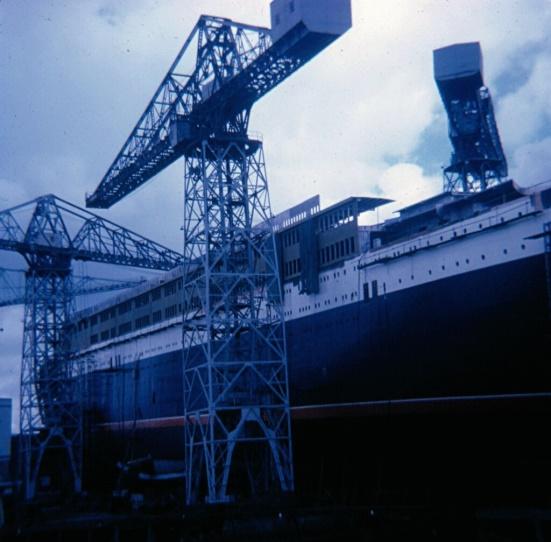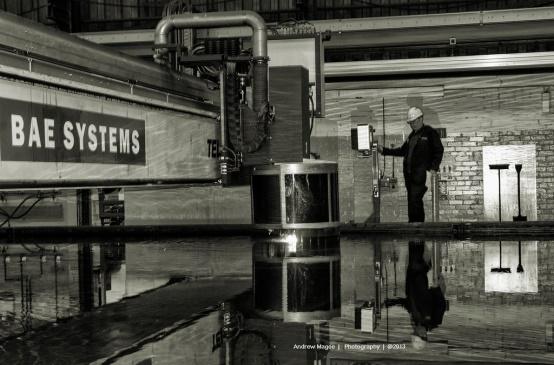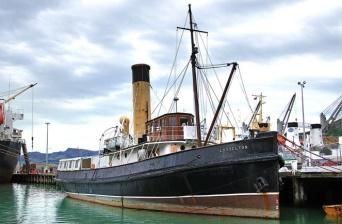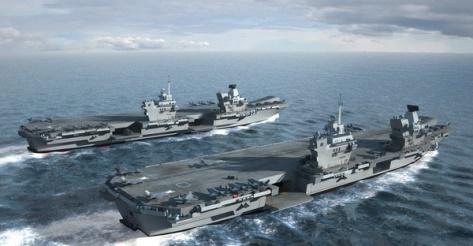The images in this photo folio are taken from the records of a variety of Clydebank shipyard companies and are sourced from the Public Domain website, Creative Commons. They provide a sense of what life in the shipyards was like for the workers – demanding physically but possibly quite fulfilling and even exciting when the finished product was launched.
The working environment









This operation cuts through electrically conductive materials by means of an accelerated jet of hot plasm. BAE Systems plc (BAE) is a British multinational arms, security, and aerospace company based in London, England which became a successor to many shipyard companies including Fairfield. ⁹



Clydebank-built ships
The following images are of ships with a strong construction association with one or other of the many and various Clydebank shipyards – from about the time our grandfather Alexander began his apprenticeship, through to our own father’s apprenticeship and employment as a naval architect, until the present day.
The shipyards were tremendously successful for a multitude of reasons, among them being the ingenuity and creativity of the naval architects who designed them and the steadfast reliability of the tradespeople who built them. When I think about it, my life would have been completely different were it not for the fact that the Australian Navy recognised the talents of a young naval architect from Clydebank, and brought him and his young family via a first-class passage on the P&O liner HMS Strathaird to their Melbourne-based Navy Office – thereby fostering the capacities and strengthening the fleet of the Australian Navy, as well as offering him and his family fresh and fortuitous opportunities. We have all benefited in this family from the sense of adventure and desire for something better for themselves and their family that propelled them forward in their own lives and enhanced the potential for their progeny to live comfortable and productive lives – the like of which they had previously not had the opportunity to experience themselves.
I am introducing this section of the photo folio with an image of the Daring-class destroyer HMAS Vendetta for which our father was her Chief Architect. Richard Alexander Sanderson Macmillan continued to play very significant roles in the building of other destroyers and aircraft carriers, but this is the one for which he was completely charge of designing, managing and supervising the entire project. Some time ago, when one of my family members was interviewing him in his retirement for a school project, he told her that the launching of HMAS Vendetta was the proudest moment of his career. I have a vague memory of being utterly overwhelmed by the size of the ship as well as the excitement and intensity of the moment when our family went to see her being launched.




completed at Denny’s Shipyard. ¹⁷


Glasgow and Inveraray Steamboat Company. ¹⁹

was built by A & J Inglis Ltd, Glasgow. ²⁰


1 “Beardmore Drawing Office” by ballasttrust is licensed under CC BY-NC-ND 2.0
2 “James Lamont & Co.” by ballasttrust is licensed under CC BY-NC-ND 2.0
3 “Kincaids engine K23” by ballasttrust is licensed under CC BY-NC-ND 2.0
4 “Reduction Gears” by ballasttrust is licensed under CC BY-NC-ND 2.0
5 “River Clyde: QE2 being built at John Browns shipyard” by stusmith_uk is licensed under CC BY-ND
6 “Govan Shipyard” by What’s the rush is licensed under CC BY-NC-ND 2.0
7 “Cranes @ Govan Shipyard” by bjmullan is licensed under CC BY-SA 2.0
8 “Denny ship model experiment tank” by I like is licensed under CC BY-NC-ND 2.0 ; https://en.wikipedia.org/wiki/William_Denny_and_Brothers
9 “Plasma Cut” by Andy Magee is licensed under CC BY-NC-ND 2.0 ;
10 “British sailors recovering a failed torpedo 1916” by Great War Observer is licensed under CC0 1.0
11 “Old Photograph Shipyard Workers Glasgow Scotland” by Tour Scotland Photographs is licensed under CC BY-NC-ND 2.0
12 “Public Domain: Paul Robeson with Shipyard Workers in WWII (NARA/unidentified fotog)” by pingnews.com is marked with CC PDM 1.0
13 https://engine.presearch.org/search?q=HMAS+Vendetta
14 “May 3, 1954: HMAS VENDETTA [II] is launched at Williamstown – RAN.” by Kookaburra2011 is licensed under CC BY-NC-SA 2.0
15 “Ca. mid-1970s: HMAS VENDETTA [II] from the starboard quarter – RAN.” by Kookaburra2011 is licensed under CC BY-NC-SA 2.0
16 “Steam Tug’ Lyttleton'” by Bernard Spragg is licensed under CC0 1.0
17 “Cutty Sark-Historic Clipper Ship” by tonynetone is licensed under CC BY 2.0
18 “The Iron Cross at an unknown port” by Robert Cutts is licensed under CC BY-SA 2.0
19 “Lord of the Isles” by ballasttrust is licensed under CC BY-NC-ND 2.0
20“Starwort” by TimWebb is licensed under CC BY-NC-SA 2.0
21 “The Royal Yacht Britannia, Brisbane River, 6 March 1963” by Queensland State Archives is licensed under CC PDM 1.0
22 “HMS Queen Elizabeth & HMS Prince of Wales” by Defence Images is licensed under CC BY-NC 2.0
